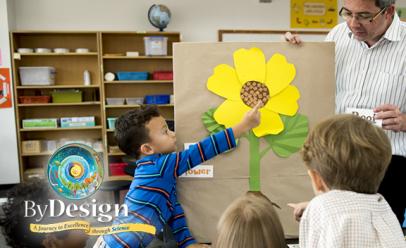 By: Carol Campbell, PhD Vice President for Education, Southwestern Union
By: Carol Campbell, PhD Vice President for Education, Southwestern Union
At some point in their lives, most students want to become a teacher because it is one of the first career choices they are exposed to. Some students even view teaching as an easy job. Have you ever considered letting your students test out teaching as a career choice? This could be done at any grade level, with younger students likely needing a bit more guidance than your middle or high school students.
You likely do this in some ways in your classroom already by having students help other students, but you don’t necessarily tell your students “you be the teacher.” Giving your students this task for a particular lesson forces them to take ownership of the concept being taught and likely study it in more depth than what they would if you presented the concept to them.
There are several ways to go about turning the tables and making your students teachers. It could be as simple as asking your students to explain and demonstrate how to solve a specific type of math problem or conduct a specific science demonstration, or as complicated as teaching the entire lesson for the day. You may choose to assign each student or a group of students an objective to teach to the class or to choose their own objective related to a specific topic. Make sure that your students understand that this is how professional teachers start—they know what they want students to learn. The challenge is figuring out a way to present it to students that makes it fun and memorable while achieving the objective.
Make yourself available as a resource to ask questions about what a teacher would do in a specific situation and as a content expert to help students clarify the topic they are supposed to teach. Encourage students to consider how they would best learn about the topic and to include visuals. A rubric outlining these types of details is very helpful to guide students.
Another approach to letting the students be the teachers is to team up with a younger grade level and have your students teach a specific concept to younger students. You could have several groups in your classroom all assigned the same topic to teach to a small group of younger students. In addition to your students becoming content experts on the topic, they also learn about the cognitive differences in a younger child.
You may want to consider recording the students’ lessons so they can do a self-evaluation. This is an opportunity to explain to students why teachers, and many other professionals, are always learning and always striving to do better.
You might be surprised at what your students can teach you. In my social studies classes, I presented the required curriculum relating to medieval history, but I let students choose an objective related to the topic we were studying. Several students delved into medieval architecture and construction techniques far deeper than we would have as a whole class. A few students who enjoyed cooking researched what types of food were eaten and how they were prepared, even bringing the class some samples. Another student went into the science behind the weapons used during that era. As a whole, the entire class learned more than what they would have from just the curriculum that was provided.
In addition to gaining a deeper understand of the curriculum that your students need to know, they gain a new respect for you as a teacher and the work you put into a lesson. They also learn more about one another and themselves. And, you might just learn a few tips on how to present a concept to students in a slightly different way that you hadn’t thought of. These types of activities are a great opportunity to develop a sense of teamwork and belonging in the classroom.